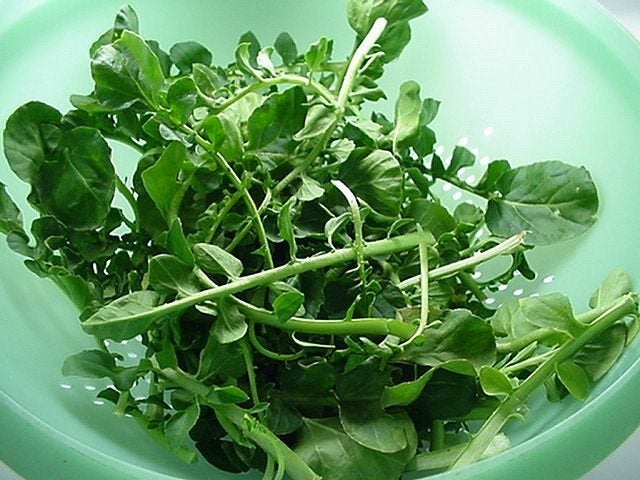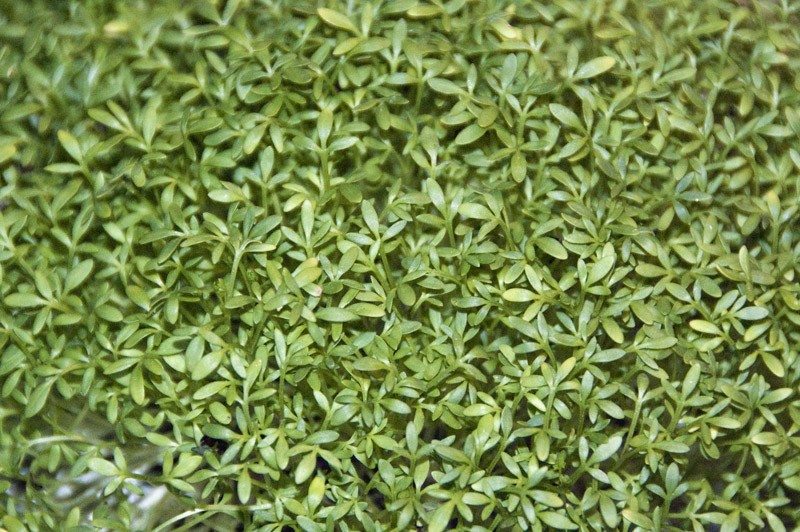Care Of Land Cress Plants: Information And Tips For Growing Upland Cress

Cress is an all-purpose name encompassing three major cresses: watercress (Nasturtium officinale), garden cress (Lepidium sativum) and upland cress (Barbarea verna). This article is concerned with upland, or land cress plants. So what is upland cress and what other useful information can we dig up about land cress cultivation?
What is Upland Cress?
There are many names for upland or land cress plants. Amongst these are:
- American cress
- Garden cress
- Dryland cress
- Cassabully
- Winter cress
In the southeastern states, you’ll see/hear this plant referred to as:
- Creasy salad
- Creasy greens
- Highland creasy
In that region, growing upland cress can often be found growing as a weed. Although similar in taste and growth habit, land cress is much easier to grow than watercress. The plants are cultivated for their edible, sharp tasting leaves which are small and somewhat square in shape with a slight serration of the leaf margins. Looking and tasting very much like watercress only with a stronger peppery flavor, upland cress is used in salads or in herb mixes. It can be eaten raw or cooked like other greens such as or kale. All parts of the plant are edible and rich in vitamins, iron, and calcium.
Land Cress Cultivation
Growing upland cress is very easy, although with much confusion regarding its name. When purchasing seeds, it's best to refer to the plant by its botanical name of Barbarea verna. Land cress thrives in cool, moist soil and partial shade. This mustard family member bolts quickly in hot weather. It is grown in the spring and fall and is hardy through mild freezes.
To ensure a continuous supply of the tender young leaves, it's best to sow successive plantings. Since it's hardy, covering the plants with a cloche or other protection will allow continual picking throughout the winter. Prepare the bed for growing upland cress by removing clods, plant detritus, and weeds and rake it smooth and level.
Broadcast and work into the soil prior to planting, 3 pounds (1.5 kg.) of 10-10-10 per 100 square feet (10 sq. m.). Plant the seeds only about ½ inch (1.5 cm.) deep in moist soil. Because the seeds are so small, plant them densely to be followed by thinning. Space the rows 12 inches (30.5 cm.) apart with plants spaced 3-6 inches (7.5 to 15 cm.) within the row. When the seedlings are large enough, thin them to 4 inches (10 cm.) apart.
Gardening tips, videos, info and more delivered right to your inbox!
Sign up for the Gardening Know How newsletter today and receive a free copy of our e-book "How to Grow Delicious Tomatoes".
Keep the plants well watered and wait patiently for seven to eight weeks until upland cress harvesting time. If the leaves lose their deep green hue and turn yellowish green, side dress with 6 pounds (2.5 kg.) of 10-10-10 for every 100 feet (30.5 m.) of row. Be sure to do this when the plants are dry to avoid burning them.
Upland Cress Harvesting
The leaves of upland cress can be harvested once the plant is about 4 inches (10 cm.) high. Simply pluck the leaves from the plant, leaving the stem and roots intact to form more leaves. Cutting the plant will encourage additional growth. You may also harvest the entire plant if you desire. For prime leaves, harvest before the plant blooms or the leaves may become tough and bitter.

Amy Grant has been gardening for 30 years and writing for 15. A professional chef and caterer, Amy's area of expertise is culinary gardening.
-
 Looking For Plants To Give You The Soft And Fuzzies? Try These 5 Fuzzy Leaf Plant Options
Looking For Plants To Give You The Soft And Fuzzies? Try These 5 Fuzzy Leaf Plant OptionsLovers of texture, drama, silver foliage and tactile plants will adore these special sensory garden additions. These fuzzy leaf plant options will leave you all aglow
By Susan Albert
-
 Get Ready For A Summer Of Hummers! Grow These Full Sun Hummingbird Plants and Flowers
Get Ready For A Summer Of Hummers! Grow These Full Sun Hummingbird Plants and FlowersIf you’re lucky enough to enjoy a sunny backyard, make sure you are maxing out on your pollinator opportunities and grow these full sun hummingbird plants and flowers
By Tonya Barnett
